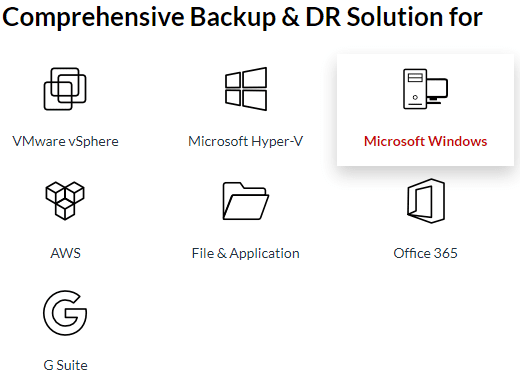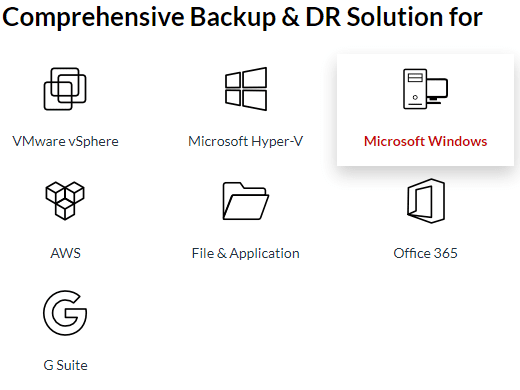What is the Primary Goal of Business Continuity Planning

Due to the outbreak of the Coronavirus, organizations are having to take a hard, close look at their business continuity plans and put them into operation in many cases. While it wasn’t a disaster that wiped out infrastructure that has brought about this look at BC/DR, it should make businesses scrutinize very closely their BC/DR plans and how they maintain business continuity in all types of disaster. Due to the wide range of environments that most businesses are using today, there is a need to ensure they have protected all business-critical infrastructure that exists on-premises, virtual, cloud, Software-as-a-Service, etc. Let’s take a closer look at the landscape of today’s business environments and see how solutions from Vembu BDR Suite can help organizations be prepared, no matter what type of dishsaster they may face.
What is Business Continuity?
When you think about business continuity, what comes to mind? No doubt, you think about disaster, or something else that disrupts the way your business normally carries out business-critical operations.
When an organization thinks about business continuity, it really involves everything, not just the technical but also the people, processes, infrastructure, services, contacts, communication, and many other aspects of normal business operation, to “keep the cabs running”.
However, in the highly technical world that we live in, the technology infrastructure and access to data is perhaps one of the most important things to think about when assessing your business-continuity plan.
Operating in a disaster recovery scenario or a set of events that impacts the normal way businesses carry out their normal operations means there will most likely be an impact to the efficiency and effectiveness of how normal operations are carried out.
However, the important thing to consider is that with an effective business continuity plan, business can carry on. Even if this is at a less efficient level, business operations are still happening which is extremely important to the survivability of your business.
What is the Primary Goal of Business Continuity Planning?
In short the primary goal of business continuity planning should be – how do we continue to operate in a disaster scenario. Disasters can have any number of causes – natural disasters, man made disasters, ransomware, bio-disasters, medical emergencies (Coronavirus), and others.
Another important goal of business continuity planning is to plan on disaster before it happens and have your contingency plans in place. It is far too late to start working on contingency actions when you are in the middle of some type of disaster that disrupts normal business operations.
Businesses do well to go through many different “what if” scenarios and see how these would be handled.
There are many serious questions that arise when a business is thinking about business-continuity planning.
- What areas of the business are business-critical?
- What are the contingencies for this business-critical areas of the business?
- What other processes need to be put in place to continue operating your business?
- Are the technology solutions in place for business-continuity?
- Can your technology infrastructure be transitioned effectively to another location?
- What about remote workers? Do you have the technology solutions necessary to transition to remote working for employees?
- Is your data replicated between locations?
- What backup solutions do you have in place to protect your data across locations?
- Is data accessible in the cloud? How is it accessed?
- How are operations transitioned seamlessly between normal production scenarios and a BC/DR scenario?
The above are just a few of the questions that can help businesses get started evaluating where they stand with their current business-continuity planning.
Protect Your Business-Critical Data for Business Continuity
An extremely important aspect of business-continuity is protecting your data that is critical for the functioning of your business. A challenge for most businesses is protecting all data no matter where it is located.
Businesses today have sprawling environments that have business-critical data contained in them. This can span across on-premises environments as well as into the cloud.
In fact, it is very common in today’s infrastructure landscape to have business-critical internal services located on-premises and then also make use of Software-as-a-Service offerings in the cloud such as G Suite or Office 365.
Your business might find yourself spanning not only different infrastructure environments to run your business and access your data, but also using multiple data protection solutions so you can cover all aspects of your infrastructure.
Ensure Business Continuity Across All Plastforms with Vembu BDR Suite
A solution for protecting all your environments that I have worked with over the past few years is Vembu BDR Suite. Vembu has a solid product that protects your data over multiple platforms and infrastructure types.
They were the first backup vendor that protected vSphere 6.7 when it was released. They not only protect vSphere but also Hyper-V, Amazon AWS EC2 instances, physical workstations and servers, and also Software-as-a-Service (SaaS) offerings like G Suite and Microsoft Office 365.
Vembu Webinar
Vembu is hosting a Webinar in a few days to discus protecting your data across the many environments that generally comprise your data landscape.
In times of uncertainties, it is imperative to keep your customer information secure. Instead of opting for multiple offerings for various environments, you can watch a live demo about how Vembu BDR Suite is able to cater to Backup & DR needs of virtual, physical, cloud workloads & SaaS applications.
Webinar Title (click to signup): Vembu BDR Suite – One Stop Solution to Backup your Virtual, Physical, Cloud Workloads and SaaS Applications
Date & Time:
- Mar 24, 2020 (Tuesday)
- Apr 02, 2020 (Thursday)
- 09 A.M PST | 12 P.M EST | 11 A.M CST





